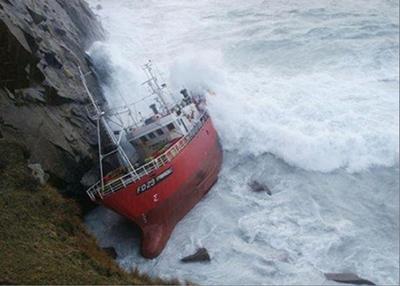New UK database of maritime ‘disruptions’

A new database compiled by researchers at the University of Southampton has revealed how the UK maritime sector’s resilience and vulnerability to hazardous events has changed over time.
The study, published last month in the journal Natural Hazards, assessed the number and severity of events that impacted ports, coastal areas and offshore zones around the UK between 1950 and 2014. The findings can be used to inform strategies to protect maritime industries against projected impacts of climate change, extreme weather events, and increased operational pressures.
The maritime sector is a significant contributor to the UK economy, with strengths in shipping and ports, as well as maritime engineering, manufacturing and related business services. Activities in coastal areas are not only vulnerable to human error and mechanical failure, but are exposed to changeable weather conditions and associated sea states.
Hazardous events, or ‘disruptions’, therefore occur for a number of reasons, but the severity will vary depending on the magnitude of – and preparedness for – such an incident. In the study, a disruption was recorded if it resulted in a change to ‘business-as-usual’ conditions, ranging from minor operational delays and interventions, to severe damage, evacuation and loss of life.
Lead author Esmé Adam (née Flegg), who is a PhD student at the University’s Southampton Marine & Maritime Institute, explains: “This study has produced the first detailed database of UK maritime disruptions, allowing us to see how the UK has been affected by, and responded to, these events through time. A key finding was the identification of the seasonality of disruptions, with over two-thirds of natural events occurring between November and January. Improving our understanding of how and when the UK is vulnerable to disruptions is vital in aiding decision-makers in increasing resilience.”
To populate the database, Esmé compiled information from newspapers, online news reports and other relevant literature. A total of 88 events were identified and classified in terms of severity, of which the biggest number were triggered by wind storms, followed by human error and mechanical faults. Other causes were poor visibility, rough seas, snow and ice, and storm surges.
According to the findings, since 1950 impacts associated with flooding and structural damage have decreased because of refined health and safety regulations, better sea defences and storm warning systems along the UK’s coastline. Financial impacts and disruption have become more prevalent, however, as have disruptions caused by human error and mechanical faults, in part because of the increasing strain on UK ports and waterways.
“These findings are of benefit to decision-makers by informing coastal and port authorities of weaker points in the UK’s defences against maritime disruptions. By improving our understanding of the UK’s current vulnerability we can also better predict how coastal areas may be affected by climate change in future decades. The methods used within this study were designed to allow development of comparable studies for other countries; which would allow comparison of vulnerability between nations,” says Esmé.
Esmé is a second-year PhD student, funded by the University’s Southampton Marine & Maritime Institute and the Faculty of Engineering and Environment. Esmé’s work spans maritime engineering and maritime law disciplines. “Working jointly between the Faculties of Law and Engineering and the Environment has provided a unique opportunity to make my research more cohesive,” she says. “A challenge in research is letting it become too niche, whereas by keeping an effective balance between multiple research areas allows development of a broader range of skills, and enables you to defend your research from a number of angles.”